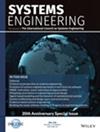调整战略前瞻框架以实现重用集成
IF 1.6
3区 工程技术
Q4 ENGINEERING, INDUSTRIAL
引用次数: 0
摘要
在开发程序中,重用组件和子系统到复杂系统中的集成不断增加,这是一种减少所需资源和降低复杂性的方法。先前的研究表明,重用通常是系统集成失败的驱动因素。先前的工作确定了确保重用成功集成到系统中的四个注意事项。本文采用了战略远见学科的一个框架,为解决这些问题提供了一个固定的路线图。该框架包括六个阶段的10条指导方针,即框架、扫描、预测、愿景、规划和行动。该框架针对18个由于重用组件或子系统而失败的历史系统进行了评估,以确定该框架是否会缓解重用的故障机制。该框架被发现在18个系统中100%缓解了故障机制。本文章由计算机程序翻译,如有差异,请以英文原文为准。
Adapting a strategic foresight framework to reuse integration
The integration of reuse components and subsystems into complex systems is continuing to increase in development programs as a method to reduce resources needed and to reduce complexity. Previous research identified that reuse can commonly be a driver of system integration failures. A previous work identified four considerations for ensuring that reuse is integrated into a system successfully. This paper adapts a framework from the discipline of Strategic Foresight that provides a fixed roadmap for addressing the considerations. The framework consists of 10 guidelines across six phases, Framing, Scanning, Forecasting, Visioning, Planning, and Acting. The framework was evaluated against 18 historical systems that failed due to reuse components or subsystems to determine if the framework would have mitigated the failure mechanisms around the reuse. The framework was found to have mitigated 100% of the failure mechanisms across the 18 systems.
求助全文
通过发布文献求助,成功后即可免费获取论文全文。
去求助
来源期刊

Systems Engineering
工程技术-工程:工业
CiteScore
5.10
自引率
20.00%
发文量
0
审稿时长
6 months
期刊介绍:
Systems Engineering is a discipline whose responsibility it is to create and operate technologically enabled systems that satisfy stakeholder needs throughout their life cycle. Systems engineers reduce ambiguity by clearly defining stakeholder needs and customer requirements, they focus creativity by developing a system’s architecture and design and they manage the system’s complexity over time. Considerations taken into account by systems engineers include, among others, quality, cost and schedule, risk and opportunity under uncertainty, manufacturing and realization, performance and safety during operations, training and support, as well as disposal and recycling at the end of life. The journal welcomes original submissions in the field of Systems Engineering as defined above, but also encourages contributions that take an even broader perspective including the design and operation of systems-of-systems, the application of Systems Engineering to enterprises and complex socio-technical systems, the identification, selection and development of systems engineers as well as the evolution of systems and systems-of-systems over their entire lifecycle.
Systems Engineering integrates all the disciplines and specialty groups into a coordinated team effort forming a structured development process that proceeds from concept to realization to operation. Increasingly important topics in Systems Engineering include the role of executable languages and models of systems, the concurrent use of physical and virtual prototyping, as well as the deployment of agile processes. Systems Engineering considers both the business and the technical needs of all stakeholders with the goal of providing a quality product that meets the user needs. Systems Engineering may be applied not only to products and services in the private sector but also to public infrastructures and socio-technical systems whose precise boundaries are often challenging to define.
 求助内容:
求助内容: 应助结果提醒方式:
应助结果提醒方式:


